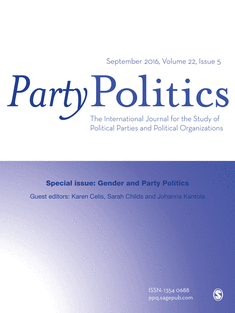New publication by Semih Çakır


Semih published a paper in the journal Party Politics. In his paper, Semih uses the data from the Comparative Study of Electoral Systems projects to study the association between citizens’ feelings of party ambivalence and their likelihood to turn out to vote.
Abstract
Does party ambivalence, that is, simultaneously evaluating positively more than one political party, decrease turnout? The extant literature on this question is limited to the American case, and findings are rather mixed. Using the data from the Comparative Study of Electoral Systems project, this paper provides a first large-scale comparative analysis of the ambivalence-turnout nexus in 46 countries. Based on two different ambivalence measures, I show that party ambivalence is more prevalent in multiparty systems and that a substantial portion of citizens are ambivalent. Moreover, ambivalence, on average, reduces turnout by at least 4.5 percentage points across countries. Importantly, however, this is not the case for every country. Whether ambivalence decreases voter turnout is conditioned by macro-level factors. More specifically, ambivalence tends to dampen turnout in (1) polarized contexts, (2) parliamentary systems, (3) voluntary voting countries, and (4) less fragmented systems.
The full article can be accessed here.
This content has been updated on 8 April 2021 at 21 h 08 min.